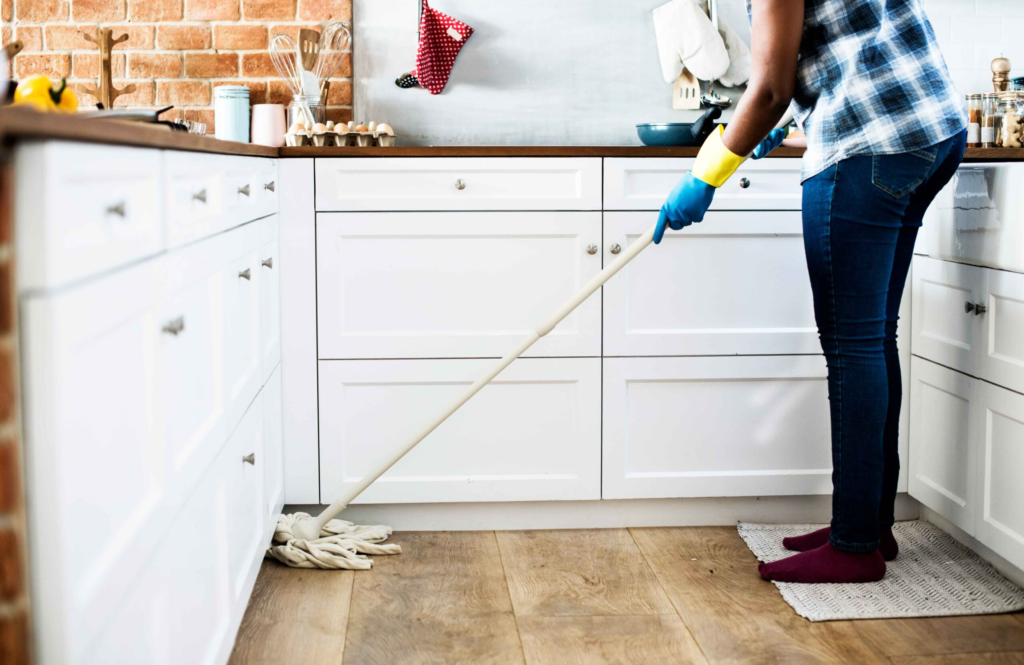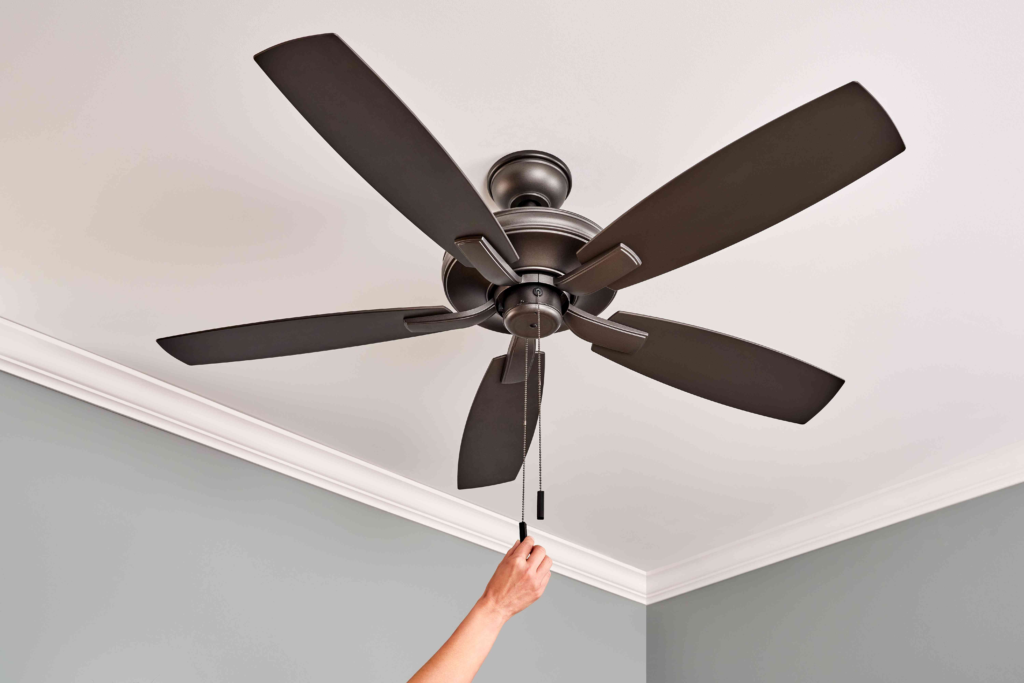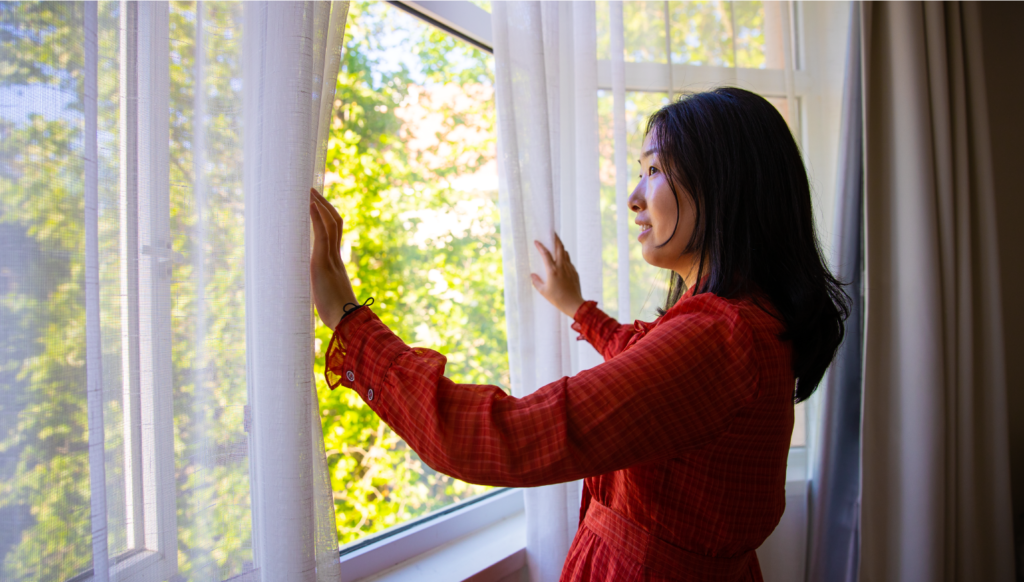As a homeowner, you are probably familiar with how to summer season your home which includes tasks such as scheduling a furnace inspection and sealing doors and windows against drafts. But before warmer temperatures arrive it’s also important to remember there are additional preparations that must be made prior to summer season coming; doing this can improve cooling efficiency while helping prevent allergies or dust issues that might otherwise arise during this season.
Here are 10 proactive actions that you can take now to prepare your home for summer and enjoy its benefits!
Related Blog : How to Identify Basic Electrical Wiring
1. Do your spring cleaning
Prepping your home for summer season requires more than just a quick clean; it requires following an intensive spring cleaning list.
There’s a good reason for our spring cleaning tradition of embarking on an intensive cleanup expedition as soon as winter has ended and summer approaches. Over winter, dust tends to build up inside our homes because we’re shielded from fresh air; but with spring’s arrival comes renewed energy and plenty of sunshine which illuminates lingering debris that had previously lain dormant for several months.
Spring cleaning routines vary, but their overall goal remains the same: revitalizing areas which may have become neglected during regular maintenance. This includes areas like:
- Cleansing thoroughly curtains and blinds.
- Cleaning windows inside as well as outside taking note of the window sills and trim.
- Cleaning off outdoor and indoor bulbs and light fixtures.
- Cleaning high-touch surfaces like the stair railings, light switches as well as cabinet hardware.
- Clearing out your dryer vent.
The most efficient approach for clearing out your dryer vent is to start by dusting, followed by sweeping and vacuuming to make sure any airborne particles are collected quickly.
Related Blog : How to Install Sheet Vinyl Flooring

2. Give your home an exterior touch-up
Summer season months are ideal for painting projects due to being relatively dry (most of the time). Exterior painting should take place between April and October for best results; be wary about remodeling frames of windows or doors during hotwaves as paint could dry too rapidly and lead to paint chips or spatter.
Adding color can increase curb appeal. Things you can do include revitalising the front entrance, beautifying garden fences or revitalizing old window frames.
“Composite Prime’s director Charles Taylor suggests that when summer season arrives, garden fences and walls may appear neglected due to cold temperatures and rain.” To restore a uniform color scheme and restore aesthetic value to these neglected spaces, after smoothing out affected areas with sandpaper or brush application of high-quality outdoor paint can help to bring them back up to par.
Related Blog : How to Cat-Proof Your House

3. Do some routine HVAC maintenance
HVAC systems must be prepared for an increase in workload this summer season, and an essential step in getting your home summer-ready is ensuring they operate at maximum efficiency.
As summer allergies can be seasonal, make sure your air filter is well maintained and functioning effectively. Filters often need replacing every 90 days; in general.
Prior to performing summer HVAC maintenance, other key steps include clearing away clutter and debris around all outdoor and indoor components (leaving around two feet between pieces), as well as shutting off water flow to your furnace’s humidifier for the time being; you’ll resume this process again come fall.

4. Deep clean your BBQ
An ideal maintenance plan for barbecues includes regular cleaning after each use, but it is highly recommended to conduct a deep clean periodically. With warm summer season nights approaching, take the opportunity to wear Marigold gloves and clear away dirt and grime to create an inviting setting for dining outdoors. Failure to perform routine maintenance could result in the accumulation of old residues, charred residues, excess oils or potentially hazardous debris which poses fire risks; hence illustrating its necessity.
“For a thorough barbecue cleaning session,” suggests Sophie Herrmann of Jeyes Fluid, “start by paying attention to its interior. Heat the grill up to its maximum temperature setting before covering and letting it heat for approximately 10 minutes before using a non-bristled grill brush with metal bristles to clean its grates carefully while avoiding burns.”
Related Blog : How to Design an Accessible Bathroom
Herrmann suggests addressing the “grillbox”, which must be cleaned thoroughly with warm, soapy water to remove solidified food particles bonded to its wall. Use an old-fashioned spatula or knife to break loose food debris that has adhered to it before using a special cleaning agent to wipe away grime, stubborn stains and food remnants stuck to its surfaces. For longer storage periods than two months, follow a rigorous cleaning schedule in order to protect its health.”

5. Check your thermostat
Be proactive against the intense summer season heat by making sure that your thermostat in the home is functioning efficiently prior to experiencing even your first heatwave.
Set your thermostat to AC mode, and lower its temperature by five degrees below your home’s current temperature. Wait for the system to turn on, along with an aroma of cool air escaping out of its vents; any restriction in airflow could indicate potential root problems.
Whenever it’s time to upgrade your thermostat, consider upgrading to an intelligent model. Not only can intelligent thermostats ensure efficient HVAC operation (barring any ductwork issues), they can save approximately 15% in energy usage during summer season heatwaves.
Related Blog : How Much Does Hardwood Flooring Cost?

6. Test your smoke and carbon monoxide detectors
Today is an ideal day to conduct a test of your carbon monoxide and smoke detectors, not only due to battery issues but also because dust accumulation could impede these crucial devices. Do not put off testing these essential detectors! Do it now before it’s too late.
Get out a clean cloth and dust your alarms thoroughly. If the batteries appear to be dying and require replacement, don’t put off making this change any further.

7. Take a look at your gutters
Summer season raindrops bring relief with their soothing pitter-patter, providing soothing music for our soul. However, sometimes they find a way into our homes and cause havoc!
Winter winds can wreak havoc on your gutters, so take a walk around the perimeter of your home and make sure your gutters are free from obstructions and are pointed in the correct direction, away from your foundation. We shouldn’t allow water to pool near our foundation as that would be an expensive disaster waiting to happen!
Related Blog : Cut renovation costs : 10+ Best Ideas

8. Do some basic landscaping
Apart from your plans for planting this springtime, now is also an opportune time to survey your yard for warning signals. Remove trees and shrubs that did not survive winter weather well and tend to any areas needing some attention.
Are You Finding Dead Areas of Grass? Your desire to reseed may be strong, yet patience must be exercised if this is to become reality. The ideal time and place for grass seed planting would be late summer season or early autumn as temperatures will not be as intense and scorching sun can make it more challenging to accomplish tasks at hand.

9. Start rotating your ceiling fans counterclockwise
In summer season months, it’s ideal to set your ceiling fan to spin counterclockwise to provide downward cooling of air flow rather than an upward flow of air from its original direction. Furthermore, this counterclockwise motion helps in dispelling moisture from the atmosphere which is especially useful if living in regions with higher levels of humidity.
To achieve optimal cooling, it’s essential that the ceiling fan and air conditioner work in tandem – with both operating counterclockwise. This creates synergy that increases cooling efficiency allowing you to raise temperatures by only a couple degrees. Choose an extremely low speed fan to create a relaxing downdraft and distribute chilled air throughout the room evenly.
Also read : How to Repair Garage Door Springs and Cables

10. Let there be air
Increase ventilation by opening windows whenever possible to let in fresh air while flushing out stale winter air that accumulates inside. It is best to start this process in late spring or early summer before temperatures become unbearably hot; be sure to turn off air conditioning during this process of ventilation to minimize stress on its system; for optimal results if the sun is very intense it would be wiser to reserve window openings for evening when cooler air has settled before opening them again during sleep time.
Prep your house for summer season by dedicating one weekend day (plus perhaps an additional day for spring cleaning that has fallen behind) to these essential tasks (perhaps adding in additional spring cleaning as well). Doing these maintenance duties now can save time later on while you enjoy outdoor sunshine – and make a conscious effort to prioritize preventative over reactive maintenance for maximum effectiveness and no potential issues!

11. Clean your windows in summer season
As winter’s grip loosens, revealing an array of sleet, snow, and possible rainfall, now is an opportune moment to renew your windows, eliminate mold growth from inside out, and bring back their shine both interiorly and externally.
Cracked windows can be an eye sore, marring the aesthetics of your home and ruining its charm, but fear not: Adam Pawson, Director of Digital for Safestyle UK recommends many solutions to tackle them and banish those unsightly streaks forever.
Also read : Top 7+ Ways to Aging In Place Kitchen Design and Remodeling
Are You Stuck on How to Clean Windows? Check Out These Easy Solutions
- Start by dusting away any dust with paper or microfiber, before moving on to cleaning uPVC windows where scratches and blemishes will quickly vanish when using an ice-cold bowl mixed with some washing-up liquid, using soft white cloths instead of colored ones since their dye may leave behind unsightly stains on plastic surfaces.
- Adam suggests preparing a spray that includes one part distilled (white) vinegar to ten parts warm water, which can then be applied directly onto a cloth and evenly rubbed across glass surfaces. For an added splash of brilliance, sprinkle some baking powder onto the cloth prior to applying this solution; it will assist greatly with cleaning efforts.”
- Final tip for window frames: Be mindful of their inner frames. “It can be easy to neglect these often neglected nooks, yet they can quickly accumulate grime and debris that has collected inside. To take care of this oversight, open up each window and use an old toothbrush to dislodge any dirt, dust or cobwebs trapped within their frames.”

More Blog : A Better Handyman





